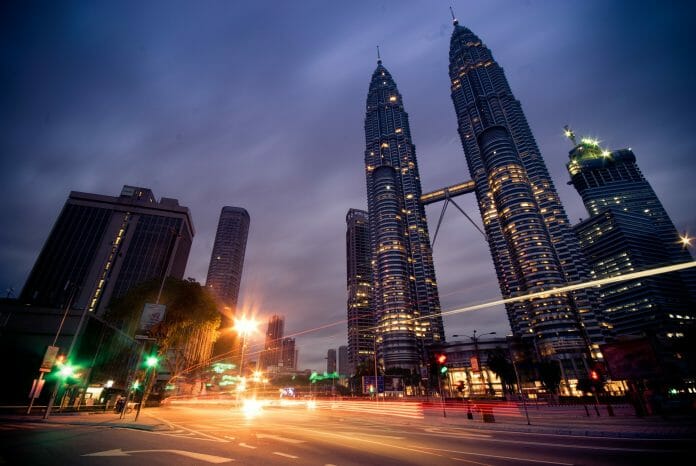Kuala Lumpur is now the 30th most expensive location for overseas workers in Asia, and the 162nd most expensive location globally. This was one of the findings of the latest Cost of Living research published by ECA International, the world’s leading provider of knowledge, information, and software for the management and assignment of employees around the world.
On the other hand, Singapore rose two places to 12th most expensive location in the world, as prices and inflation rose throughout 2021.
“Singapore has witnessed relatively high rates of inflation in the past year when measured by our basket of goods,” said Lee Quane, Regional Director – Asia at ECA International. “Inflation in day-to-day items has been accompanied by relatively high rates of growth in costs of rental accommodation. This contributed to Singapore’s rise of two places in the rankings along with the relative strength of the Singapore dollar against the yen and US dollar.”
Asia Highlights
Hong Kong remains the most expensive location in the world, with many prices rising quickly after experiencing slower growth in 2020 due to the economic impact of the Covid-19 pandemic.
Quane said, “Hong Kong is consistently at the top of the table and this year was no different with prices increasing by 2.7% overall in local currency. The Hong Kong economy has seen a recovery of sorts after a turbulent few years caused by the Covid-19 pandemic, and political and social upheaval before this, and the increase in local prices reflects this.”
Chinese cities all rose in the latest rankings, with four Chinese locations now in the top 15 and Shanghai and Guangzhou both entering the global top ten.
Quane said, “Chinese cities have seen a rise in the rankings on the back of a strengthening of the Chinese yuan and relatively high rates of price increases. The Chinese currency has strengthened against all other major currencies thanks to a rebound in the demand for Chinese goods after a Covid-related lull at the beginning of 2020, making the cities more expensive now for overseas workers compared to before. Additionally, inflation in China has also picked up this year particularly due to rising fuel prices.”
Similarly, in Taiwan, all surveyed cities climbed the rankings and Taipei entered the top 20 most expensive global locations.
“The economy of Taiwan is currently experiencing a period of strength as its currency performs well against the US dollar. Taiwan avoided the worst of the economic downturn during the initial stages of the Covid-19 pandemic due to its early success in mitigating the spread of the virus, but the biggest reason for the boost to the Taiwanese dollar was the strength of exports, particularly semiconductors. This has contributed to the rise in our rankings of cities in Taiwan,” explained Quane.
Thai locations on the other hand, all saw a significant drop in the rankings. Bangkok dropped 12 places and now sits outside of the top 50 most expensive locations globally, with all other Thai cities moving to outside of the top 125 locations.
Quane said, “The long-term effects of limited tourism and restricted overseas travel continue to impact the Thai economy, causing all Thai locations to plummet in the rankings. The lack of overseas visitors has weakened the baht while inflation rates, as measured by our baskets of goods, has been lower in Bangkok in comparison to most other locations in the region.”
Likewise, Japanese locations have all dropped in the latest rankings after a tough year for the yen. Tokyo has dropped one place to the third after being overtaken by Geneva, while Yokohama has fallen out of the global top ten to 16th.
Quane stated, “The Japanese economy has experienced a challenging period of late and the yen has fallen against all major currencies, making the country relatively cheaper when measured against living costs elsewhere. This is despite Japan seeing a rare rise in prices due in part to more expensive imports, particularly oil. The weaker yen has outweighed any price rises, which has resulted in Japanese cities becoming a little cheaper compared to some other major global locations.”
Global Highlights
Most locations within the EU have seen drops in the rankings after an unsteady period for the euro, with Paris falling out of the global top 30 and cities such as Madrid, Brussels, and Rome falling too.
Quane said, “Nearly every major Eurozone city saw a drop in the rankings this year as the euro performed worse in the last 12 months than the US dollar and British pound.”
Russian cities in the rankings have rebounded after falling significantly in the past, with Moscow moving up four places to 52nd globally and St. Petersburg moving up 12 places to 138th globally.
“The rouble has seen a rebound in line with a rally to the price of oil after a significant drop in the rankings last year. Russia, along with many other oil producing countries, has benefitted from increased demand and rising oil prices after the drop in prices that followed the start of the pandemic in 2020,” said Quane.
ECA International has been conducting research into cost of living for 50 years. It carries out two main surveys per year to help companies calculate cost of living allowances so that their employees’ spending power is protected while on an international assignment. The surveys compare a basket of like-for-like consumer goods and services commonly purchased by assignees in over 480 locations worldwide. ECA’s accommodation data is also factored in, comparing rental costs in areas typically inhabited by expatriate staff in over 411 locations worldwide.









